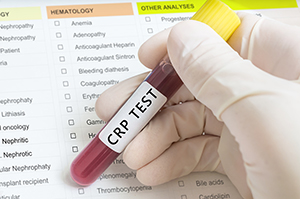



| By Dr. Ronald Hoffman

“Top Biden administration officials are weighing a plan to let all adults get a second round of coronavirus booster shots”—Politico, July 11
“Currently, many Americans are under-vaccinated, meaning they are not up to date on their COVID-19 vaccines,” said Dr. Rochelle Walensky, director of the Centers for Disease Control and Prevention, at a news briefing Tuesday. “Staying up to date on your COVID-19 vaccines provides the best protection against severe outcomes.”—VOA News, July 12
“More than 100 million Americans are boosted. Daily deaths due to COVID-19 are down 90 percent. And now, vaccinations are available for nearly every American. And we’ll remain vigilant . . . Get your shots. Get your boosters.” —President Joe Biden, June 21
They’ve even recently approved shots for toddlers.
Unfortunately, the protection afforded by boosters is not so straightforward, yet the media and public officials keep staying on message. In the absence of more definitive protective measures, and in the face of mounting resurgence of new COVID variants, they’re simply doubling down on vaccine advocacy.
And it’s the widening gulf between rigid vaccine policy and emerging science that’s undermining public confidence. Politics runs counter to ordinary people’s real-world experiences. Federal officials, undeterred, are amplifying their vaccine campaign. Even career scientists at the CDC are heading for the exits. An article in Common Sense reports: “‘There’s been a large amount of turnover. Morale is low,’ one high level official at the CDC told us. “Things have become so political, so what are we there for?’ Another CDC scientist told us: ‘I used to be proud to tell people I work at the CDC. Now I’m embarrassed.’”
Let’s stipulate, although some will contest this, that the introduction of the original vaccines might have stemmed the tide of severe illness and death in the early days of COVID before Omicron and its variants superseded Alpha and Delta. First the shots were said to provide >90% prevention, working like ordinary slam-dunk vaccines against polio and smallpox. They were touted as a path to “zero-COVID”; it was only vaccine refuseniks who were getting in the way of herd immunity that would quash the pandemic. The unvaccinated were labeled potential superspreaders and relegated to pariah status.
None of this panned out.
The vaccinated got COVID; transmissibility was not significantly reduced; the unvaccinated didn’t turn into Petri dishes for the propagation of new mutant variants.
And a recent New England Journal of Medicine article concluded:
“Primary immunization with two doses of [Moderna] or [Pfizer] vaccine provided limited protection against symptomatic disease caused by the omicron variant. A booster after either the [Moderna] or [Pfizer] primary course substantially increased protection, but that protection waned over time.”
How quickly did “protection wane”? “COVID Boosters Might Be Less Than 20% Effective After a Few Months”, heralds an NBC report about a just-released Italian study.
There’s a newly-approved shot that appeals to some of the vaccine-hesitant because of its supposed “traditional” technology—the Novavax. But it’s targeted to the same ancestral spike protein generated by the Pfizer and Moderna vaccines to address original versions of COVID, and its efficacy against new strains of Omicron remains to be demonstrated. As to safety, while side effects were rare in clinical trials, its developers admit to the possibility that it, too, can cause the dread adverse reactions of myocarditis and pericarditis.
What about the prospect for new upgraded Omicron-specific vaccines due out this fall? COVID-response critic Alex Berenson points out a potential hurdle:
“Unfortunately, the original mRNA shots appear to dominate the immune response even after people receive an Omicron-specific booster. Even after receiving an Omicron booster, people make far fewer Omicron antibodies than they made to the wild-type spike when they received the original two doses of the vaccine. It is unclear what the companies or anyone else can do about this problem, which is called immune imprinting or original antigenic sin and appears particularly acute with the mRNA vaccines.”
In other words, vaccine-induced immunity appears to get stuck like a broken record, targeting previous versions of COVID, even were newly-formulated boosters to be layered over previous shots.
Will Americans have access to the right Omicron-specific boosters this fall? It’s anybody’s guess.
Not that natural immunity acquired from previous infections provides a perfect bulwark against reinfection—as so many COVID two and three-timers can attest. Should we have expected otherwise for a virus that behaves like the common cold, which has eluded medical solutions from time immemorial?
So the choice to get boosters remains a personal one, with uncertain and transient benefits, weighed against the real—albeit infrequent—risks of side effects. Perhaps this should be considered as an option for high-risk individuals—the elderly, or those with comorbidities. Many otherwise healthy individuals are likely to take their chances without them.
Meanwhile, no public officials are talking lifestyle. An article was recently published in the American Journal of Medicine entitled, “Mapping One Million COVID-19 Deaths and Unhealthy Lifestyle Behaviors in the United States: Recognizing the Syndemic Pattern and Taking Action.” Its author is Ross Arena, a recent guest on Intelligent Medicine (“In the grips of twin pandemics”).
Arena’s just-released article states:
“Decades of a high prevalence of unhealthy lifestyle behaviors laid the foundation for our current unfortunate situation by increasing vulnerability to a novel virus, especially among subgroups who have been historically marginalized. As such, a major pathway to defeating this syndemic is through the promotion of healthy living behaviors for all. Now is the time for action appropriate to meet the demands of a syndemic and a new path forward to a healthier and more equitable future.”
Arena specifies:
“These behaviors and conditions included physical activity, obesity, diabetes, and smoking . . . Specifically, COVID-19 mortality rates are generally highest in the Southeast region where unhealthy lifestyle behaviors (i.e., physical inactivity, poor nutrition, smoking, low sleep quality) and excess body mass likewise have the highest prevalence.”
It’s no surprise that Americans are uniquely vulnerable in view of the recent shocking finding that less than 7% of US adults meet government criteria for optimal cardiometabolic fitness!
You can learn details about how optimizing lifestyle can impact our immune resilience by downloading my free special report, “Immunity Reset”.
Though we think of declining estrogen as the hallmark of menopause, it's actually common for…

Up to 12 percent of Americans have ulcers at some point in life. Peptic ulcers…
Gallbladder disease is a modern illness. An estimated 20 million Americans have gallbladder disease. The…

There’s more to GI health than whether or not to take an acid-blocker. All too…

In the latest attempt to remove “stigma” from medical terminology, liver specialists have come up…

Q: My husband’s high sensitivity C-reactive protein (hs-CRP) is 1.62 and his homocysteine is 13.1. If…

Banish the Bloat: Leyla Weighs In with Tips and Insights

Our virtual voicemail is open 24/7, so there's no need to wait to submit your questions for Dr. Hoffman. Leave a message, and you may hear your question featured on the Intelligent Medicine radio program!